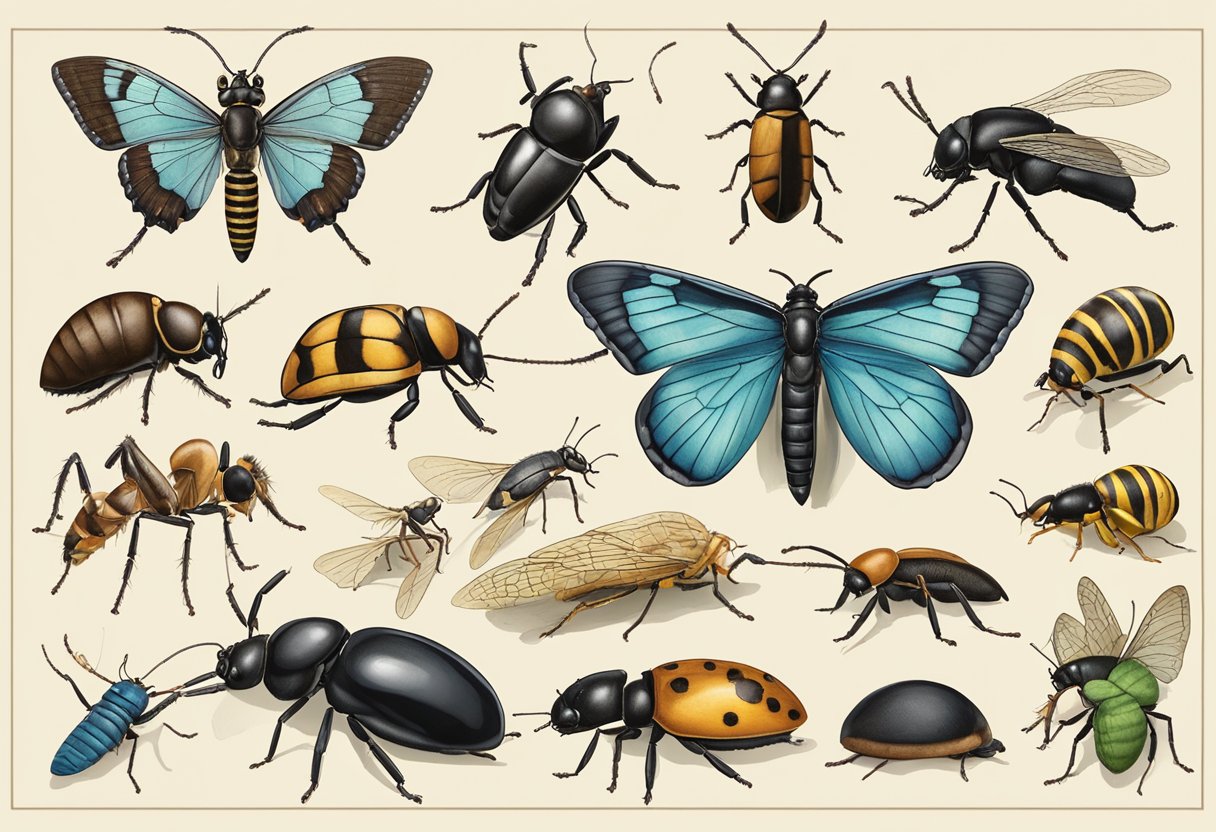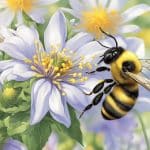Types Of Bugs
Types of bugs are a diverse group of invertebrates that play important roles in the ecosystem. They belong to the class Insecta, which is the largest group within the phylum Arthropoda. Insects have a chitinous exoskeleton, three-part body, three pairs of jointed legs, compound eyes, and a pair of antennae.
Insects can be found in almost every habitat on Earth, from the deep sea to the highest mountains. They come in a wide variety of shapes, sizes, and colors, and can have a range of physical characteristics such as wings, stingers, and antennae. Some insects are beneficial to humans, such as pollinators like bees and butterflies, while others can be pests that damage crops and spread diseases.
Understanding the classification of insects, their physical characteristics, and common behaviors can help people identify and manage insect pests. It is also important to recognize the role that insects play in the ecosystem, as they are often integral to the survival of other species. By learning about the different types of bugs and their interactions with the environment, people can better appreciate the diversity and complexity of the natural world.
Key Takeaways
- Insects are a diverse group of invertebrates that play important roles in the ecosystem.
- Understanding the classification of insects, their physical characteristics, and common behaviors can help people identify and manage insect pests.
- Recognizing the role that insects play in the ecosystem can help people better appreciate the diversity and complexity of the natural world.
Classification of Insects

Insects are classified into different orders based on their characteristics, habitat, and behavior. In this section, we will discuss the classification of insects based on their orders and habitat.
By Order
Lepidoptera
Lepidoptera, which means “scale-winged,” includes moths and butterflies. They are characterized by their wings, which are covered with scales. Lepidoptera is the second largest order of insects, with over 180,000 species.
Diptera
Diptera, which means “two-winged,” includes flies, mosquitoes, and gnats. They are characterized by having only one pair of wings, with the second pair modified into halteres, which help them balance during flight. Diptera is one of the largest orders of insects, with over 150,000 species.
Hymenoptera
Hymenoptera, which means “membrane-winged,” includes ants, bees, wasps, and hornets. They are characterized by having two pairs of wings, with the front pair larger than the hind pair. Hymenoptera is the third largest order of insects, with over 150,000 species.
Coleoptera
Coleoptera, which means “sheath-winged,” includes beetles. They are characterized by having hardened forewings, called elytra, which protect their membranous hindwings. Coleoptera is the largest order of insects, with over 400,000 species.
By Habitat
Insects can be found in a wide range of habitats, including land, water, and air. Here are some of the common habitats where insects can be found:
Terrestrial
Terrestrial insects live on land and can be found in a variety of habitats, including forests, grasslands, deserts, and wetlands. Some of the common terrestrial insects include ants, beetles, grasshoppers, and butterflies.
Aquatic
Aquatic insects live in water and can be found in rivers, lakes, ponds, and oceans. Some of the common aquatic insects include dragonflies, mosquitoes, and mayflies.
In conclusion, the classification of insects is based on their orders and habitat. Each order has its unique characteristics, and insects can be found in a wide range of habitats. Understanding the classification of insects is essential for scientists and researchers to study their behavior, habitat, and evolution.
Physical Characteristics
Anatomy
Bugs, also known as insects, are invertebrates with segmented bodies, jointed legs, and external skeletons. They have three distinct body parts: the head, thorax, and abdomen. The head contains their sensory organs, including their compound eyes, antennae, and mouthparts. The thorax is the middle section of their body and contains the wings and legs. The abdomen is the rear section of their body, and it contains the internal organs.
The exoskeleton of bugs is made of chitin, which is a tough, protective material that provides support and protection. The exoskeleton also prevents water loss and helps bugs retain moisture.
Bugs have three pairs of jointed legs that are attached to their thorax. The legs are adapted for various purposes, such as walking, jumping, and swimming. Some bugs, such as grasshoppers, have long hind legs that are adapted for jumping, while others, such as water striders, have long, slender legs that allow them to walk on water.
Adaptations
Bugs have evolved a variety of adaptations that allow them to survive in different environments. Some bugs have wings, which allow them to fly and escape predators. Other bugs, such as ants, have adapted to live in social groups, which allows them to work together to gather food and protect their colony.
Bugs also have specialized mouthparts that are adapted for feeding. Some bugs, such as butterflies, have long, tube-like proboscises that they use to suck nectar from flowers. Other bugs, such as mosquitoes, have mouthparts that are adapted for piercing skin and sucking blood.
Bugs have compound eyes, which are made up of many individual lenses that allow them to see in all directions. They also have antennae, which are used for sensing their environment and communicating with other bugs.
In summary, bugs have a variety of physical characteristics that allow them to survive in different environments. Their exoskeleton, jointed legs, wings, segmented bodies, and specialized mouthparts are all adaptations that help them to thrive.
Common Insect Behaviors
Insects are known for their diverse behaviors that help them survive and thrive in various environments. This section will explore some of the most common insect behaviors, including social structure and reproduction.
Social Structure
Social insects, such as ants, bees, and termites, have a complex social structure that allows them to live and work together effectively. These insects live in organized colonies or nests and have specific roles assigned to each individual. For example, worker ants are responsible for gathering food, while the queen is responsible for laying eggs and maintaining the colony’s population.
Insects that live in colonies also have a highly developed communication system that allows them to coordinate their activities. They use pheromones, sounds, and vibrations to convey messages to other members of the colony. This communication system helps them to work together efficiently and protect the colony from predators.
Reproduction
Insects have a wide variety of reproductive strategies, including ual and aual reproduction. Insects that reproduce ually have specialized reproductive organs that are used for mating. Male insects typically have a pair of testes that produce sperm, while female insects have ovaries that produce eggs.
Some insects, such as bees and ants, have a reproductive caste system, in which certain individuals are responsible for reproducing, while others are responsible for other tasks, such as gathering food. In these colonies, the reproductive individuals are typically the queen and the drones.
Insects that reproduce aually, such as aphids, can produce offspring without mating. This allows them to rapidly increase their population in favorable conditions. However, aual reproduction can also lead to a lack of genetic diversity, which can make the population more vulnerable to diseases and environmental changes.
In conclusion, insects have a wide range of behaviors that help them to survive and thrive in different environments. Understanding these behaviors can help us better appreciate the complexity of these fascinating creatures.
Insect Interaction with Ecosystem
Insects play a crucial role in maintaining the balance of ecosystems. They interact with their environment in various ways, including pollination and pest control.
Pollination
Bees and wasps are essential pollinators for many plants. They transfer pollen from the male to the female parts of flowers, allowing plants to reproduce and produce fruit. Without pollinators, many plant species would not survive, and the ecosystem would suffer.
Pest Control
Insects also play a critical role in controlling pest populations. Mosquitoes, fleas, and other pests can carry diseases that harm humans and other animals. Termites can cause significant damage to structures and habitats. Insects such as ladybugs and praying mantises are natural predators of these pests, helping to keep their populations in check.
Insects also contribute to the nutrient cycle by breaking down organic matter and returning nutrients to the soil. They are an essential food source for many animals, including birds and other insects.
Overall, insects are an essential part of the ecosystem, and their interactions with their environment are crucial for maintaining balance and sustaining life.
Identification and Management of Insect Pests
Insect pests can cause significant damage to crops and other types of plants, leading to substantial losses. They can also cause human and animal diseases. For many years, pesticides have been the only method of control, which has led to insect resistance and adverse effects on the environment, natural enemies, and human health. Therefore, it is essential to identify and manage insect pests using other techniques.
Household Pests
Household pests can be a nuisance and can cause health problems. Common household pests include bed bugs, cockroaches, ticks, lice, mites, and spiders. Identification of these pests is crucial to determine the most effective management technique.
Entomologists can assist in identifying pests and providing recommendations for management. Proper sanitation, managing moisture in and around the home, vacuuming, sealing off insect entry points, proper firewood storage, and using a dehumidifier are some examples of management techniques to help reduce or eliminate an indoor insect problem. Avoid using pesticides indoors when at all possible to help minimize exposure.
Agricultural Pests
Agricultural pests can cause significant economic losses to farmers and growers. Identification of these pests is essential to determine the most effective management technique. Some common agricultural pests include aphids, caterpillars, beetles, and mites.
Integrated pest management (IPM) is an effective approach to managing agricultural pests. IPM involves a combination of techniques, including cultural, biological, and chemical control methods. Cultural control methods involve practices such as crop rotation, planting pest-resistant varieties, and sanitation. Biological control methods involve the use of natural enemies of the pest, such as predators and parasites. Chemical control methods involve the use of pesticides, but only as a last resort and with careful consideration of the potential environmental and human health impacts.
In conclusion, identifying and managing insect pests is crucial to prevent economic losses and potential health problems. Using a combination of techniques, such as proper sanitation, cultural and biological control methods, and careful use of pesticides, can effectively manage insect pests.






